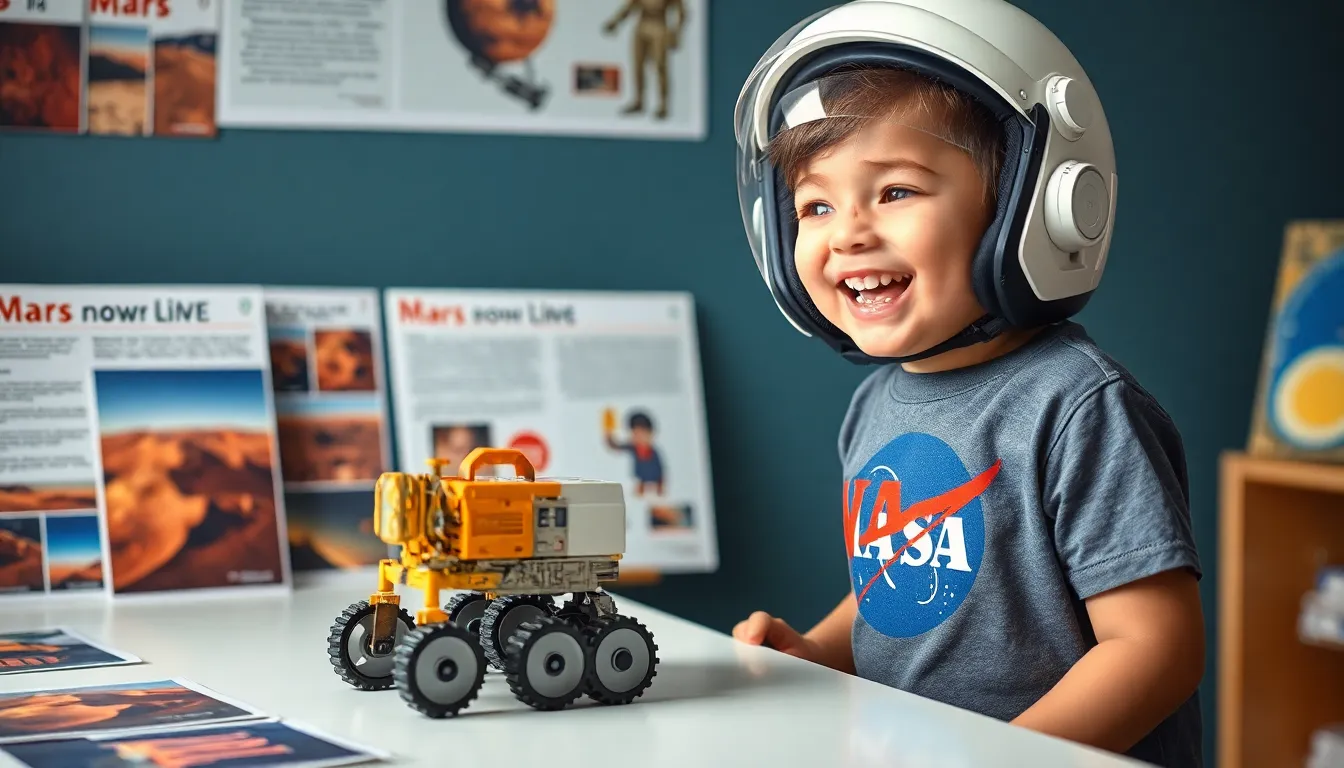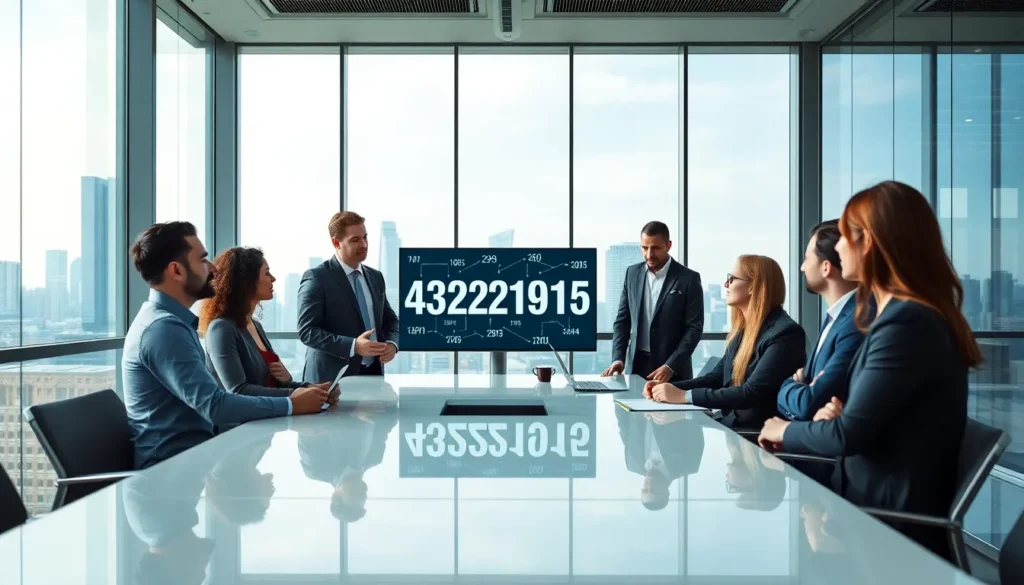Space has always captivated the imagination of kids and adults alike. With stunning visuals of distant planets and the thrill of exploration, it’s no wonder that young minds are drawn to the wonders of the universe. Space missions designed for children not only ignite curiosity but also encourage a passion for science and technology from an early age.
These missions offer interactive experiences that make learning about space fun and engaging. Whether it’s through educational programs, hands-on activities, or virtual simulations, kids can embark on their own space adventures. By participating in these initiatives, they gain insight into the challenges and triumphs of space exploration, fostering a sense of wonder that could inspire the next generation of astronauts, scientists, and engineers.
Table of Contents
ToggleOverview of Space Missions for Kids
Space missions for kids engage young minds through interactive learning and practical experiences. These initiatives often include educational programs, workshops, and virtual simulations that demystify the complexities of space exploration.
Types of Programs
- Space Camps
Space camps immerse children in hands-on activities, such as building rockets and conducting experiments. Programs typically last one week and accommodate various age groups.
- Online Workshops
Online workshops connect kids with experts in the field. They explore topics like the solar system, spacecraft design, and astronomical phenomena. Sessions usually occur weekly and allow global participation.
- Interactive Simulations
Interactive simulations mimic real-life missions, such as Mars rover landings or astronaut training scenarios. These experiences allow kids to solve problems and make decisions similar to those faced by real astronauts.
- Field Trips to Space Centers
Field trips to space centers provide firsthand exposure to space exploration. Kids tour facilities, view exhibits, and may meet professionals in the aerospace industry.
Key Learning Outcomes
- STEM Skills Development
Children acquire vital STEM (Science, Technology, Engineering, Math) skills through practical applications. They learn to approach complex problems with curiosity and creativity.
- Teamwork and Collaboration
Many programs emphasize teamwork, encouraging kids to collaborate on projects and share ideas. These social interactions foster communication skills.
- Critical Thinking
Participants engage in activities that require analytical and critical thinking. By tackling challenges, kids learn to evaluate different solutions and outcomes.
- Inspiration for Future Careers
Exposure to space missions can inspire children to pursue careers in science, technology, or engineering fields. Early interest often leads to long-term educational pursuits in these disciplines.
Conclusion
Space missions designed for kids play a crucial role in cultivating interest in space and science. Through various engaging formats, children gain knowledge and skills necessary for future scientific endeavors.
Popular Space Missions for Young Astronauts

Exploring popular space missions for kids enhances their understanding of space exploration. These initiatives offer hands-on experiences that inspire curiosity and creativity.
NASA’s Mars Rover Missions
NASA’s Mars Rover missions provide an engaging platform for young astronauts. Kids can learn about the rovers, such as Spirit, Opportunity, Curiosity, and Perseverance. Each rover’s mission aims to analyze the Martian environment, search for signs of past life, and assess the planet’s habitability. Educational activities often simulate rover operations, allowing children to code simple commands, explore Mars’s surface, and interpret scientific data. These interactive experiences develop critical thinking and problem-solving skills while sparking interest in Martian geology and the potential for future human missions.
ESA’s ExoMars Program
ESA’s ExoMars Program captivates young minds with its focus on searching for signs of life on Mars. The program consists of the Trace Gas Orbiter and the Rosalind Franklin rover, each designed to study the Martian atmosphere and surface. Workshops and educational games related to ExoMars engage children by incorporating mission design and data collection. Participants simulate planetary exploration and investigate the significance of methane in the Martian atmosphere. These activities foster an understanding of astrobiology and planetary science, encouraging kids to dream about their futures in space exploration and research.
Educational Resources for Space Missions
Educational resources enhance children’s understanding of space missions, making learning interactive and enjoyable. A variety of formats exist, including online courses, webinars, books, and documentaries.
Online Courses and Webinars
Online courses and webinars provide structured learning on space missions and exploration. Platforms like NASA’s Jet Propulsion Laboratory (JPL) offer free courses tailored for kids, featuring video lectures and hands-on projects related to current space missions. Websites like Coursera and edX also host courses that cover astronomy, rocket science, and space technologies. These resources allow kids to learn at their own pace and engage with experts in the field, enhancing their comprehension of complex topics like astrophysics and planetary science.
Books and Documentaries
Books and documentaries serve as excellent resources for immersing kids in space exploration. Titles like “Astrophysics for Young People in a Hurry” and “The Darkest Dark” introduce concepts of space in an age-appropriate manner. Documentaries such as “Our Planet” and “The Universe” offer captivating visuals and real-life footage, sparking curiosity about space missions and the science behind them. Both books and documentaries provide valuable insights that complement hands-on activities and online learning, fostering a deeper appreciation for the wonders of the universe.
Encouraging Interest in Space Exploration
Engaging children in space exploration involves a variety of strategies, each designed to ignite curiosity and foster learning. Interactive experiences play a critical role in this process. Programs such as space camps and online workshops provide hands-on activities that captivate young minds. Children get the chance to build model rockets and simulate space missions, transforming complex concepts into exciting, memorable experiences.
Incorporating technology into learning strategies enhances children’s understanding. Virtual simulations of space missions allow kids to experience what it’s like to be an astronaut or engineer in real-time scenarios. These activities not only make learning enjoyable but also offer insights into the challenges of space exploration.
Encouraging teamwork and collaboration among children contributes significantly to their learning process. Group activities, whether in a classroom or at a space camp, help develop essential STEM skills. Children learn to communicate effectively, solve problems collectively, and share responsibilities while working toward a common goal.
Utilizing resources tailored to varying age groups also supports space exploration interest. Online platforms like NASA’s Jet Propulsion Laboratory offer age-appropriate courses covering topics in astronomy and engineering. Books designed for young readers, such as “Astrophysics for Young People in a Hurry,” present complex ideas in a digestible format, fostering curiosity and appreciation for the universe.
Field trips to space centers provide practical insights. Visits to locations like the Kennedy Space Center allow children to see rockets, learn from professionals, and sense the excitement of real-world space missions. These experiences can motivate kids to pursue careers in science and technology, establishing foundational interests that extend into their futures.
Overall, encouraging interest in space exploration combines interactive learning, teamwork, and age-appropriate resources, creating a pathway for children to explore the wonders of the universe.
Space missions designed for kids are more than just fun activities; they’re gateways to a world of discovery. By engaging in hands-on experiences and interactive learning, children not only explore the vastness of space but also develop essential skills that will benefit them in the future.
These programs inspire curiosity and creativity while fostering teamwork and critical thinking. As kids dive into the wonders of space exploration, they build a foundation for potential careers in science and technology. The excitement of learning about missions like Mars Rover and the ExoMars Program can ignite dreams that last a lifetime.
Encouraging children to explore space ensures that the next generation will continue to push boundaries and seek answers to the universe’s mysteries.









